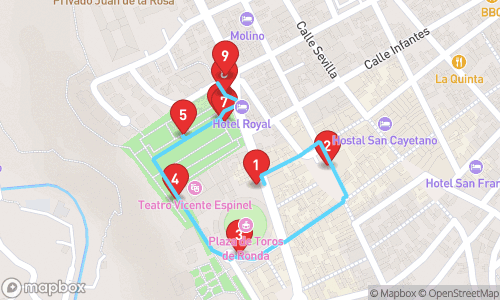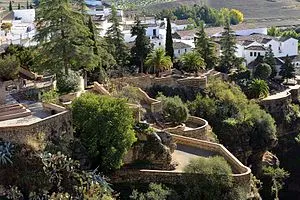
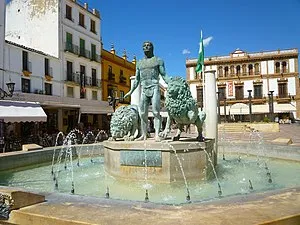
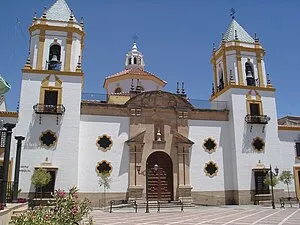
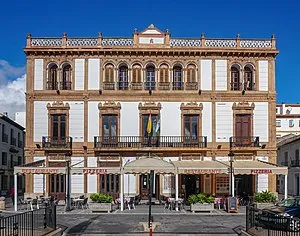
Ravishing Ronda: An Odyssey Through Time

Tour Guide
Samuel L. Jackson
Welcome to Ronda! On this GPS guided audio tour, we will visit 9 stops on a route of 1.24km. This tour focusses mainly on general tourism.
Locatello is an app where you can generate personal audio guided tours. Set your preferred distance, guide, language and theme, and a guided tour is created on the spot.
Walking Time
Distance
stops
Language
Tour Stops

Jardines de Cuenca, Ronda
A 23-terrace urban garden, the Jardines de Cuenca, hangs off the ledges of the Tajo, offering fantastic views of the city.
Audio Preview
30 sec
Fuente de Hércules, Ronda
A sculptural group comprising an almost naked man, two lions, and a coat of arms of Andalusia, representing the Andalusian feeling and symbol chosen at the Andalusian Assembly of Ronda in 1918.

Iglesia del Socorro
A 17th-century church building that initially served as a hospital for the poor and sick, later becoming a parish church in the 19th century and undergoing several renovations and restorations.

Casino
A historic building, the Casino del Círculo de Artistas, is the first example of modernist architecture in Ronda, featuring a three-storey design with Plateresque and modernist influences.

Plaza de Toros de Ronda
A historic bullring built in 1779, designed by Martín de Aldehuela, with a unique stone structure and all-covered seating, hosting both bullfighting events and cultural exhibits.

Monument to the Spanish Fighting Bull
A bronze statue, the Monumento al Toro, honors the Toro de Lidia, a symbol of Ronda's festival, culture, and history. The impressive monument showcases the strength and beauty of the fighting bull.
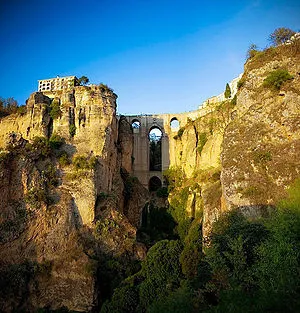
Puente Nuevo
A Roman-style stone bridge that spans the 120-metre-deep chasm of the Guadalevín River, dividing the city of Ronda, southern Spain. Completed in 1793, it was the newest and largest of the three bridges across the gorge.
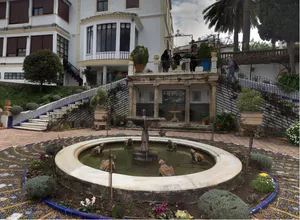
Casa Don Bosco
A modernista palace, Casa Don Bosco is a museum that maintains its original interior and exterior, featuring artesanía local, ceramics, and hand-carved wooden furniture from the 19th century. The building hosts a charming garden with views of the Gaudalevín valley and the Sierra de Grazalema.
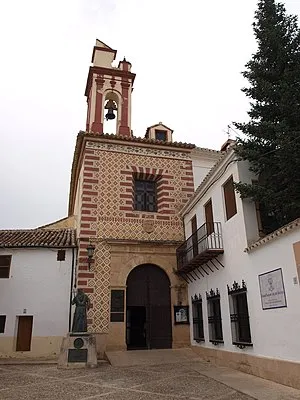
Santuario de Nuestra Señora de la Paz
A historic sanctuary originating from a 1540 hermitage dedicated to the patron saint of Ronda, La Virgen de la Paz, one of the first churches built after the expulsion of Moorish rulers.
Download App
Experience this tour and many more with our mobile app. Available for iOS and Android.
Audio Preview
Tour Map
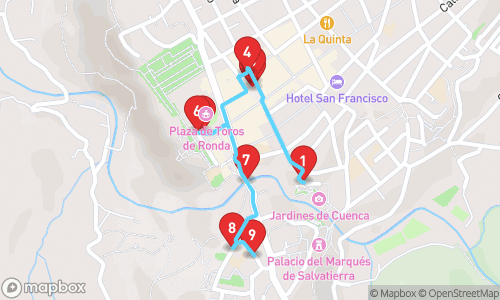
Quick Facts
- ✓GPS-guided navigation
- ✓Professional audio narration
- ✓Offline maps available
- ✓Premium content included
Why Choose This Tour
Expert Local Guide
Narrated by Jenny Multilingual, specializing in general tourism
Flexible Timing
Take the tour at your own pace, any time of day


